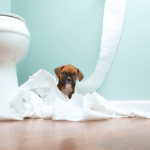Table of Contents
Bringing a new pet into your home is an exciting experience, but it also comes with responsibilities. Proper training is essential for raising a well-behaved and happy pet. This guide provides effective training techniques for new pet owners to help you establish good behavior and strengthen the bond with your furry friend.

1. Start with Basic Commands: Training Techniques for New Pet Owners
Begin your pet’s training with basic commands such as “sit,” “stay,” “come,” and “down.” These commands form the foundation for more advanced training and help establish communication between you and your pet.
- Tip: Keep training sessions short, around 5-10 minutes, to maintain your pet’s focus and interest. For more guidance, visit AKC.
2. Use Positive Reinforcement
Positive reinforcement is a highly effective training method that involves rewarding your pet for good behavior. Rewards can include treats, praise, toys, or playtime. This approach encourages your pet to repeat the desired behavior.
- Tip: Reward your pet immediately after they perform the desired behavior to reinforce the connection. Learn more at ASPCA.
3. Be Consistent: Training Techniques for New Pet Owners
Consistency is key to effective training. Use the same commands and rewards every time your pet performs the desired behavior. This helps your pet understand what is expected of them and reinforces learning.
- Tip: Ensure all family members use the same commands and rewards to avoid confusing your pet. For more tips, visit The Humane Society.
4. Practice Patience and Persistence
Training takes time and patience. Dogs and cats learn at different rates, and some behaviors may take longer to master. Stay patient and persistent, celebrating small successes along the way.
- Tip: Break down complex behaviors into smaller, manageable steps to make training more effective. For more tips, visit Cesar’s Way.
5. Socialize Your Pet: Training Techniques for New Pet Owners
Socialization is essential for helping your pet become well-adjusted and confident. Expose your pet to various environments, people, and other animals to reduce fear and anxiety.
- Tip: Start socialization early and make it a positive experience with treats and praise. Learn more about socialization at PetMD.
6. Establish a Routine
Pets thrive on routine. Establish a consistent daily schedule for feeding, walks, playtime, and rest. A predictable routine can help reduce anxiety and promote good behavior.
- Tip: Stick to the routine as closely as possible, even on weekends and holidays. For more advice, visit The Humane Society.
7. Use Crate Training
Crate training can provide your pet with a safe and comfortable space of their own. It also helps with house training and prevents destructive behavior when you’re not around.
- Tip: Make the crate a positive place by using treats and toys, and gradually increase the amount of time your pet spends in the crate. Learn more at ASPCA.
8. Address Unwanted Behaviors: Training Techniques for New Pet Owners
Address unwanted behaviors promptly and consistently. Redirect your pet’s behavior to something positive and reward them for it. Avoid punishment, as it can create fear and anxiety.
- Tip: Use commands and rewards to guide your pet towards desired behaviors. For more advice, visit PAWS.
9. Incorporate Training into Daily Activities
Integrate training into your daily routine to reinforce good behavior consistently. Practice commands during walks, playtime, and feeding to help your pet understand that good behavior is always rewarded.
- Tip: Use everyday situations as training opportunities to keep sessions natural and less formal. For more ideas, visit VCA Hospitals.
10. Seek Professional Help if Needed
If you’re struggling with training or facing specific behavioral issues, consider seeking help from a professional trainer. A certified trainer can provide personalized guidance and support to address your pet’s unique needs.
- Tip: Look for trainers who use positive reinforcement methods and have certifications from reputable organizations like the Association of Professional Dog Trainers (APDT).
Conclusion: Training Techniques for New Pet Owners
By following these training techniques for new pet owners, you can help your pet develop good behavior and become a well-adjusted member of your family. Positive reinforcement, consistency, and patience are key to successful training. Start early and stay committed to ensure your pet grows into a happy and well-behaved companion. For more tips on pet training and care, visit our website.
Frequently Asked Questions about Training Techniques for New Pet Owners
When should I start training my new pet?
It’s best to start training your new pet as soon as they come home, typically around 8 weeks old for puppies and kittens. Early training helps establish good behaviors and prevents bad habits from forming. For more tips, visit AKC.
How long should each training session last?
Keep training sessions short, around 5-10 minutes, especially for young pets. This helps maintain their focus and prevents them from becoming overwhelmed or bored. For more guidance, visit PetMD.
What if my pet doesn’t respond to training?
If your pet doesn’t respond to training, try different techniques or seek professional help. Be patient and consistent, and avoid punishment, as it can lead to fear and anxiety. For more advice, visit The Humane Society.
How can I reinforce good behavior outside of training sessions?
Reinforce good behavior throughout the day by using the same commands and rewarding your pet for positive actions. Consistency is key to helping your pet understand and remember the desired behaviors. For more tips, visit Cornell Feline Health Center.
Are there any behaviors I should avoid reinforcing?
Avoid reinforcing unwanted behaviors such as jumping, biting, or barking for attention. Instead, redirect your pet’s behavior to something positive and reward them for it. For more tips, visit PAWS.











